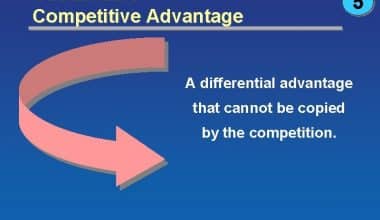Customer success is priceless to all companies. After all, if your business has customers, you need them to succeed if you want your company to grow. However, your customer success strategy and role should provide solutions to the core issues of customer portfolio development, and retention but depends on the unique size, resources, and goals of your company. Customer success management is a relationship-focused client that aligns your customer with your company’s goals igniting beneficial outcomes for everyone involved. Ultimately, an effective resume for a customer success manager creates less customer churn, lower acquisition costs, and creates more upsell opportunities. Stay tuned to learn about the salary of a customer success manager.
Overview
Customer success goes miles beyond account management. Rather than focusing on problems, it seeks opportunities and solutions proactively by collecting and leveraging as many data points as possible about the customer. What’s more, customer success informs strategy to help businesses better understand the customer experience and lifecycle, so they can improve it.
On top of all that, customer success team members focus on the customer and how that customer can succeed as opposed to only focusing on how the company can succeed. It’s a mindset shift that flares big rewards for everyone. The customer success role is focused on working proactively in partnership with customers over throughout their time as a customer to help them get more value out of their purchase and share their feedback with you. It drives the customer experience forward and ensures a successful path into the future.
How to Create an Effective Customer Success Strategy
Developing a customer success strategy is critical for the best results. Keep these six tips in mind as you create and implement your strategy.
#1. Initiate a Devoted Customer Success Team
The customer success role starts by forming the right team of people who are all-in for your clients. This team should be separate from customer service, account management, and other similar customer-centric departments. Most importantly, the number of representatives and managers on your customer success team will depend on the size of your business and available resources.
For a small business: A customer success team may be a strategic hire of just one specially trained customer support representative.
For software as a service (SAAS) Companies, enterprises, or subscription-based businesses: Customer success should become a larger department with team members dedicated to specific accounts. You’ll also need csms who lead your team and are responsible for your buyers’ long-term victories with your products or services.
Keep in mind that it’s important to have various teams in all aspects. When team members come from varied backgrounds and experiences, they bring different skill sets and viewpoints to the table hence making your strategy more creative and innovative when helping clients.
#2. Diagnose Concerns and Recount Triumphs for Your Customers
After your rock-star team is in place, influence technology to identify your customers’ big wins and stumbling blocks to success. Additionally, being open-minded to their answers rather than pushing what you want them to buy or do will help foster an honest and open relationship with your customers. Do the following to determine where you’re excelling and where you need to improve:
- Review customer complaints: Ask support agents and other customer-facing departments to log client interactions and note common customer complaints and frustrations. A CRM is helpful here.
- Descend into the data: Remember that a frequent issue may have nothing to do with your product or service. The problem could be somewhat simple but incredibly annoying to your customers. (Think consistent billing issues.)
- Get insights from successful customers: Figure out what’s going well with these customers. You can hone in on what they love so much and begin replicating that consistently.
#3. Get Everyone to Acknowledge the Customer Success Process
Customer success must be a company-wide initiative. The most impactful way to do this is to create a customer-centric culture that starts at the top and trickles down. It’ll be hard for execs to ignore your endeavors when they see the direct impact on the company’s bottom line. Once leadership is engaged, it’s much easier to get the rest of the company on board. Team leaders can spearhead many things, such as:
- Customer success initiatives
- The approval of new policies
- Product changes that improve the customer experience
This customer-centric mentality will naturally spread across the rest of the company.
#4. Make Sure the Onboarding Process Is Proactive
A thorough boarding process with plenty of educational materials ensures that any new customer will start on the right foot and receive helpful information about your business, products, and services. With a strong onboarding process, the customer will quickly see how the product or service can benefit them or fit their needs and they’ll learn how to use it effectively. For example, you may want to offer:
- Video kick-off calls for paying customers.
- In-app, checklist-style onboarding for free trial customers.
#5. Select Your Customers Selectively
In a customer success strategy, you shouldn’t try to Target every potential customer—make sure you’re being selective. Look for the type of customers that have the highest likelihood of success, not just the ones that are ready to use your services or products. Being selective with your customer base will help you tailor your messaging to them and better address their needs.
#6. Initiate a Referral Program
If you’ve fostered successful relationships with your current customers, use them to your advantage to help attract new ones. Consider starting a referral program that rewards those who support your service or product—for example, giving an existing customer a free trial or a free month of service for every new customer they refer.
Customer Success Management
The customer success management role is overseeing your business, customer success, and representatives, and maintaining a strategy to assist, delight and retain customers proactively. Also, customer success management is a specialized form of customer relationship that allows companies to get valuable customer insights that could benefit the entire organization’s product, marketing, sales, and more.
The more teams learn about their clients and their needs the better they’re able to deliver quality experiences and create a healthier customer lifecycle. Why, because happy loyal buyers often become brand advocates and rave about your company through product reviews, social media posts, and word-of-mouth recommendations.
Customer Success Management Best Practices
While your customer success strategy may vary, there are a few core best practices you can follow to help retain clients longer and increase their lifetime value across your products.
#1. Awareness
All new customers start their journey at the awareness stage where they first learn about your company and become interested in your products or services. However, consumers may be at different stages of customer awareness. Often, customers learn about the existence of new businesses through lead sources like:
- Social media
- Referrals
- Blogs
- Outbound sales
#2. Engagement
The next stage in the client lifecycle is engagement. Sales-centric organizations may choose to use the term “consideration, but “engagement” is a broader term that encapsulates all customer interactions. Here are some other ways you can engage with customers:
- Distribute customer feedback surveys
- Send push notifications
- Interact with followers on social media
#3. Conversion
The conversion stage (Or purchase step) should be frictionless, with many payment options and as few steps as possible between the customer clicking “buy” and receiving a confirmation email. You should also be transparent about pricing, returns, and refunds and make it easy for potential customers to reach out to your support team. In fact, 64 percent of customers spend more with a brand when issues get resolved on the channel they’re already using.
#4. Retention
The customer retention stage is where the relationship-building work begins. After you seal the deal with your new customers, satisfying them should be your top priority. When you create a positive onboarding experience and provide ongoing support, customers will be more likely to stick around.
#5. Loyalty
Customer loyalty happens when all the previous stages of the customer lifecycle come together. If you can successfully guide a customer through each stage, you will likely come out the other side with a customer who is a strong brand ambassador. They will look to you for products or services they need while urging their friends and family to buy from you too.
Factors of Customer Success Management
The customer success management role has many duties that span the customer life cycle journey., those duties can be categorized into eight different factors
- Segmentation
- Orchestration
- Intervention
- Measurement.
- Expansion
- Communication
- Instrumentation
- Operationalization
Customer Success Manager Salary
One of the top questions people ask when considering a career as a customer success manager role is, “How much do customer success managers make?” The fact still remains that the amount they make differs by skills, location, education, employer, company, and years of experience. Nonetheless, the average salary for a customer success manager in the US is $88,419 a year, even when there are many factors that come into play with regard to customer success manager salary and total compensation.
Additionally, because many managers work on commission in addition to a base salary, the types of goods or services sold can greatly affect their income. Here is the average salary for a customer success manager in the United States according to these three sources.
#1. According to Glassdoor
The national average salary for a customer success manager in the United States is $81,414. This salary can range from about $55,000 on the low end to about $126,000 on the high end.
#2. By Payscale
The average salary for a customer success manager in the U.S. is $69,699. This salary ranges from about $48,000 on the low end to about $110,000 on the high end.
#3. According to Indeed
The average salary for a customer success manager in the U.S. is $61,660. This salary ranges from about $55,000 on the low end to about $85,000 on the high end.
Do Customer Success Managers Earn More Than a Base Salary?
Customer Success manager compensation includes a base salary and may also have a bonus structure (68% of customer success professionals in the Totango survey cited the presence of a bonus of variable compensation as part of the overall compensation package).
Customer Success Role
There are some roles that are very similar to customer success. These roles have the same responsibilities and descriptions but just different titles. From pre-sales to post-purchase customer success has a complete variety of tasks and creates a mutually-beneficial relationship with your customers. Take a look at a few of those responsibilities in the section below.
#1. Advocate for the Company
Since a customer success manager role works one-on-one with customers, they have an opportunity to greatly influence your customer base. They act as personal cheerleaders for your business explaining to customers why you can meet their specific needs. This positive reputation will not only keep your customers satisfied but will also encourage them to refer their friends.
#2. Onboard New Customers
Onboarding is one of the biggest priorities for customer success. That’s because it’s extremely important to educate customers on how to use your product. Onboarding should focus on features they need to learn based on the projects they aim to complete. This way, they can get up to speed as fast as possible and be one step closer to achieving their goals.
#3. Follow Up on Renewals
The job of the manager is to create loyal and repeat customers instead of one-time users. This is why renewals are key for this position. The customer success manager should keep track of customer product expiration dates whether they be monthly, quarterly, or annually and follow up with customers to renew their contracts. Without following up, you risk potential churn which impacts your customer retention rates.
#4. Build Relationships between Customers and the Support Team
There are some questions customers will have that aren’t the responsibility of the management. Technical issues, minor product problems, and basic business questions should be geared toward your customer support team. They should foster a relationship between customers and support, making it easier for users to solve small or short-term problems.
#5. Be the Voice of the Customer
As someone who works directly with customers, a manager should be responsible for advocating their needs. They need to have an in-depth understanding of customer likes and dislikes about your products which can be discovered through surveys, reviews, referrals, and more.
Resume For Customer Success Manager
The resume is your first contact with the potential employer thus it should make a good impression for your application to be considered. Think of yourself as the product, then ask how you would sell your qualifications to the employer. Why, because your resume is a representation of how you work which is why it’s important to make sure your resume is exceptional.
The most effective way to stand out to hiring managers is to align the skills and experiences on your resume with the qualifications detailed in the job description. Equally important, take a look at the job description, scan it for qualifications listed first or repeatedly throughout the description then make sure that your resume emphasizes those same requirements which shows the hiring manager that you’ve thoughtfully tailored your resume to this specific job rather than using a generic resume.
Skills Needed in a Resume as a Customer Success Manager
For sure, the candidates applying for the same job as you have these abilities. Your challenge is to convince the recruiter that you have the right skills to affirm to claim your resume is the best for the position of customer success manager.
- Business Sense
- Client Management
- Familiarity with Computer Software/Hardware
- Strategic Partnerships
- Account Management
Skills Needed in a Resume as a Customer Success Manager
The following steps can help you write a competitive resume for a customer success manager position:
#1. Review the Job Description
Studying the job description can help you understand exactly what the position entails. Additionally, it can also help you match your resume with what the hiring manager wants for this position.
#2. Research the Company
Exploring the company’s website, social media accounts, and other online sources can help you understand the company’s mission and culture. Identifying the goals you share with the company can help you highlight that information in your application.
#3. Include your education
Your educational history is often a significant factor in determining your eligibility for a particular customer success manager position. Adding your educational information, such as degrees or certifications you’ve obtained, can demonstrate your formal background and experience in the customer success field.
#4. Add Your Contact Information
Featuring your contact information near the top of your resume can help potential employers contact you for interview opportunities. Some information to incorporate in this section includes your full name, address, phone number, and email. Ensuring this information is prominent and legible can help readers understand this section of your resume for customer success manager
#5. Highlight Your Resume
Having a uniform format throughout your resume can help readers review and interpret your resume. Using simple fonts, bulleted lists, and bold titles can help improve how your resume looks to hiring managers. It can also help highlight specific sections in your resume and allow computer scanning software to easily analyze your resume.
Is Customer Success a Skill?
A customer success manager’s (CSM’s) capabilities are those that enable them to streamline the sales process and ensure customer happiness. The duties associated with this job title might range widely from one organization to the next.
Is Customer Success More Stressful Than Sales?
Customer success is attractive to individuals who are considering leaving a sales career in search of something less stressful and with a more steady pay structure.
Is Customer Success a Sales Job?
Customer service (CS) and sales (Sales) handle different aspects of the customer experience, yet their work together has an effect on income. Both Sales and Customer Service work to increase revenue, while Customer Service is primarily concerned with keeping current customers happy.
What Are the Qualifications for Customer Success?
A bachelor’s degree is typical for a customer success manager. However, many firms do not require a degree to be considered for a customer success position. The most important qualifications are experience in customer-facing professions and a track record of understanding customers’ demands.
In a Nutshell
Customer success is a Major growth driver that launches your company to achieve its goal with the basics guiding you to be on the right track. As a result, it is the motion that should result in your customers loving your solution so much that they want to continue purchasing your products or services in the long term. It’s all about building strong relationships and understanding customers’ goals. Customer success is where each customer interaction offers opportunities for deeper and more meaningful engagement. To achieve customer success, your customer success manager’s resume and their teams should proactively connect with your customers throughout their lifecycle with your company.
References
- .gainsight.
- hubspot.
- resumebuilder
- .zendesk.
- .wikipedia.
- WHAT IS A RESUME FOR A JOB: What It Should Look Like & How to Write
- CRITICAL SUCCESS FACTORS: The Importance of Critical Success Factors
- 53+ Hard Skills And How To Highlight Them On A Resume
- What to Put on a Resume: 10+ Free Tips to Include in a Good Resume
- HOW TO MAKE A GOOD RESUME: Tips on Writing an Effective Resume






